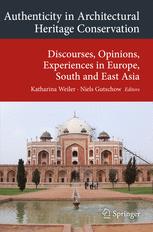

Most ebook files are in PDF format, so you can easily read them using various software such as Foxit Reader or directly on the Google Chrome browser.
Some ebook files are released by publishers in other formats such as .awz, .mobi, .epub, .fb2, etc. You may need to install specific software to read these formats on mobile/PC, such as Calibre.
Please read the tutorial at this link: https://ebookbell.com/faq
We offer FREE conversion to the popular formats you request; however, this may take some time. Therefore, right after payment, please email us, and we will try to provide the service as quickly as possible.
For some exceptional file formats or broken links (if any), please refrain from opening any disputes. Instead, email us first, and we will try to assist within a maximum of 6 hours.
EbookBell Team

4.7
106 reviewsThe book contributes to a recontextualization of authenticity by investigating how this value is created, reenacted, and assigned. Over the course of the last century, authenticity figured as the major parameter for the evaluation of cultural heritage. It was adopted in local and international charters and guidelines on architectural conservation in Europe, South and East Asia. Throughout this period, the concept of authenticity was constantly redefined and transformed to suit new cultural contexts and local concerns. This volume presents colonial and postcolonial discourses, opinions, and experiences in the field of architectural heritage conservation and the use of site-specific practices based on representative case studies presented by art historians, architects, anthropologists, and conservationists from Germany, Nepal, India, China, and Japan. With more than 180 illustrations and a collection of terminologies in German, English, Sanskrit, Hindi, Nevari and Nepali, classical Chinese and standard Mandarin, and Japanese, these cross-cultural investigations document the processual re-configuration of the notion of authenticity. They also show that approaches to authenticity can be specified with key analytical categories from transcultural studies: appropriation, transformation, and, in some cases, refusal.